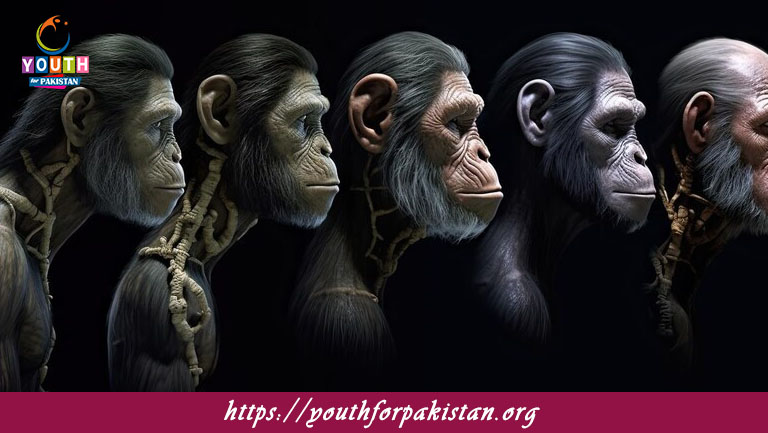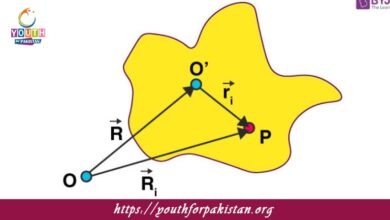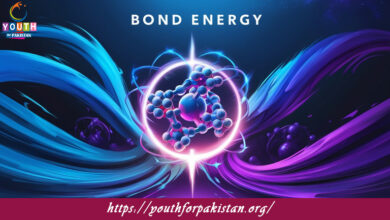Darwin‟S Theory Evolution MDCAT MCQs with Answers

Welcome to the Darwin‟S Theory Evolution MDCAT MCQs with Answers. In this post, we have shared Darwin‟S Theory Evolution Multiple Choice Questions and Answers for PMC MDCAT 2024. Each question in MDCAT Biology offers a chance to enhance your knowledge regarding Darwin‟S Theory Evolution MCQs in this MDCAT Online Test.
Darwin’s theory of evolution primarily focuses on which mechanism of change?
a) Natural selection
b) Genetic drift
c) Gene flow
d) Mutation
According to Darwin’s theory, which of the following is a key factor in natural selection?
a) Inheritance of acquired traits
b) Survival of the fittest
c) Genetic drift
d) Uniformitarianism
In Darwin’s theory, the term “fitness” refers to:
a) An organism’s ability to survive and reproduce
b) The physical strength of an organism
c) The size of an organism
d) The adaptability of an organism to environmental changes
Darwin’s concept of “descent with modification” implies that:
a) All species have remained unchanged
b) Species evolve from common ancestors
c) Acquired characteristics are inherited
d) Evolution occurs only through environmental changes
Which of the following best describes the mechanism by which natural selection operates according to Darwin?
a) Differential survival and reproduction
b) Inheritance of acquired traits
c) Genetic drift
d) Gene flow
Darwin’s theory of evolution was influenced by which book on geology?
a) “Principles of Geology” by Charles Lyell
b) “Origin of Species” by Charles Darwin
c) “On the Origin of Species” by Alfred Russel Wallace
d) “The Variation of Animals and Plants Under Domestication” by Charles Darwin
According to Darwin, which of the following is NOT a condition for natural selection?
a) Variation within a population
b) Competition for resources
c) Inheritance of acquired characteristics
d) Differential survival and reproduction
Darwin’s theory of evolution by natural selection suggests that:
a) Individuals evolve during their lifetime
b) Traits are passed from parents to offspring through genetic inheritance
c) Species do not change over time
d) Evolution happens only due to environmental pressures
Which of the following did Darwin NOT include in his theory of evolution?
a) Genetic mutations
b) Common descent
c) Natural selection
d) Struggle for existence
Darwin’s “On the Origin of Species” was published in:
a) 1859
b) 1865
c) 1871
d) 1882
Which of the following is a key component of Darwin’s theory of evolution?
a) Variation among individuals
b) Uniformitarianism
c) Inheritance of acquired traits
d) Catastrophism
Darwin’s idea of “survival of the fittest” means:
a) Only the strongest individuals survive
b) Only the most adaptable individuals reproduce successfully
c) Individuals with the largest size are favored
d) Evolution is driven by the survival of the largest species
Which concept is central to Darwin’s theory of evolution by natural selection?
a) Acquired characteristics
b) Fitness
c) Catastrophism
d) Genetic drift
Darwin’s observations of finches in the Galápagos Islands contributed to his theory by demonstrating:
a) Genetic drift
b) Adaptive radiation
c) Inheritance of acquired traits
d) Mutation theory
The “struggle for existence” in Darwin’s theory refers to:
a) Competition for limited resources
b) Struggle between different species
c) Struggle against environmental changes
d) Struggle to acquire new traits
Darwin’s theory of evolution by natural selection was contemporaneous with the development of which scientific theory?
a) Plate tectonics
b) Germ theory of disease
c) Quantum theory
d) Law of conservation of mass
Darwin’s concept of “fitness” relates to an organism’s ability to:
a) Adapt to changes in the environment
b) Survive and reproduce in a given environment
c) Compete with other species
d) Avoid predation
The idea that all species share a common ancestor is a key element of Darwin’s theory known as:
a) Descent with modification
b) Natural selection
c) Genetic drift
d) Speciation
Darwin’s theory proposes that evolution occurs:
a) Gradually over time
b) Rapidly in sudden bursts
c) Only in isolated populations
d) Through the inheritance of acquired traits
Darwin’s observation of the geographical distribution of species led him to propose:
a) Uniformitarianism
b) Adaptive radiation
c) Catastrophism
d) Genetic drift
Darwin’s theory suggests that variation in populations is:
a) Essential for natural selection
b) Resulting from environmental changes
c) Unimportant for evolutionary change
d) Limited to acquired traits
According to Darwin, which of the following is a primary driver of evolutionary change?
a) Natural selection
b) Mutation
c) Genetic drift
d) Gene flow
Which of the following was a major influence on Darwin’s development of his theory?
a) Studies of embryology
b) The fossil record
c) Studies of plant physiology
d) The structure of DNA
Darwin’s theory of evolution argues that:
a) Evolution is a result of random chance alone
b) Evolution is driven by a combination of natural selection and genetic variation
c) Evolution happens due to environmental pressures only
d) All traits are acquired during an organism’s lifetime
The concept of “adaptive evolution” is most closely associated with:
a) Natural selection
b) Genetic drift
c) Gene flow
d) Mutation
Darwin’s theory was initially met with controversy due to:
a) Religious beliefs about the creation of life
b) The lack of fossil evidence
c) Lack of a mechanism for inheritance
d) Incomplete observations of species
The mechanism by which advantageous traits become more common in a population over time is known as:
a) Natural selection
b) Genetic drift
c) Gene flow
d) Mutation
Which of the following did Darwin NOT propose in his theory of evolution?
a) Evolution is gradual
b) Species evolve due to inheritance of acquired traits
c) All species share a common ancestor
d) Natural selection is a driving force of evolution
The “origin of species” refers to:
a) The initial appearance of life on Earth
b) The diversification of life from a common ancestor
c) The creation of new species in a laboratory
d) The extinction of species
Darwin’s observations of which group of animals contributed significantly to his ideas about evolution?
a) Birds
b) Mammals
c) Insects
d) Reptiles
Which of the following concepts did Darwin introduce to explain how new species arise?
a) Adaptive radiation
b) Genetic drift
c) Gene flow
d) Mutation
Darwin’s theory of evolution was published in his book titled:
a) “The Descent of Man”
b) “The Variation of Animals and Plants Under Domestication”
c) “On the Origin of Species”
d) “The Structure and Distribution of Coral Reefs”
Which of the following is a direct result of Darwin’s theory of evolution?
a) The development of modern genetics
b) The theory of plate tectonics
c) The invention of the microscope
d) The discovery of DNA structure
Darwin’s theory proposes that natural selection acts on:
a) Genetic variation within a population
b) Environmental factors alone
c) Acquired traits
d) Uniformity in traits across species
According to Darwin, the main source of new genetic variations in populations is:
a) Mutations
b) Gene flow
c) Genetic drift
d) Natural selection
Darwin’s concept of “common descent” implies that:
a) All living organisms have a single origin
b) New species arise due to environmental pressures
c) Evolution is a result of sudden, dramatic changes
d) Species do not change over time
The “fitness” of an organism in Darwin’s theory is determined by:
a) Its ability to reproduce and pass on its genes
b) Its ability to survive environmental changes
c) Its size and strength
d) Its resistance to diseases
Darwin’s observations on which island group contributed to his theory of evolution?
a) The Galápagos Islands
b) The Hawaiian Islands
c) The Caribbean Islands
d) The Fiji Islands
Which concept is fundamental to Darwin’s theory of evolution by natural selection?
a) Variation among individuals within a population
b) Uniformity in traits among all species
c) Inheritance of acquired traits
d) Random changes in allele frequencies
Darwin’s theory of evolution suggests that:
a) Evolution is a linear process
b) All species evolve at the same rate
c) Evolution is influenced by random genetic variations and selection pressures
d) Evolution is solely influenced by environmental pressures
Darwin’s theory of evolution was later integrated with:
a) Modern genetics
b) The theory of relativity
c) Quantum mechanics
d) The germ theory of disease
Darwin’s principle of natural selection includes which of the following elements?
a) Variation, competition, and inheritance
b) Uniformity, competition, and random changes
c) Inheritance of acquired traits and mutation
d) Random genetic changes and environmental pressures
Darwin’s theory of evolution suggests that:
a) Evolution is a result of uniform changes across populations
b) Traits that increase an organism’s reproductive success are favored
c) Evolution occurs through the inheritance of acquired traits
d) Evolution happens through random and sudden changes
The concept of “struggle for existence” involves:
a) Competition for resources
b) Cooperation among species
c) Genetic drift
d) Uniformity in species traits
Darwin’s observations on the diversity of life led him to propose:
a) The theory of evolution by natural selection
b) The theory of uniformitarianism
c) The theory of spontaneous generation
d) The theory of acquired characteristics
If you are interested to enhance your knowledge regarding Physics, Chemistry, Computer, and Biology please click on the link of each category, you will be redirected to dedicated website for each category.





